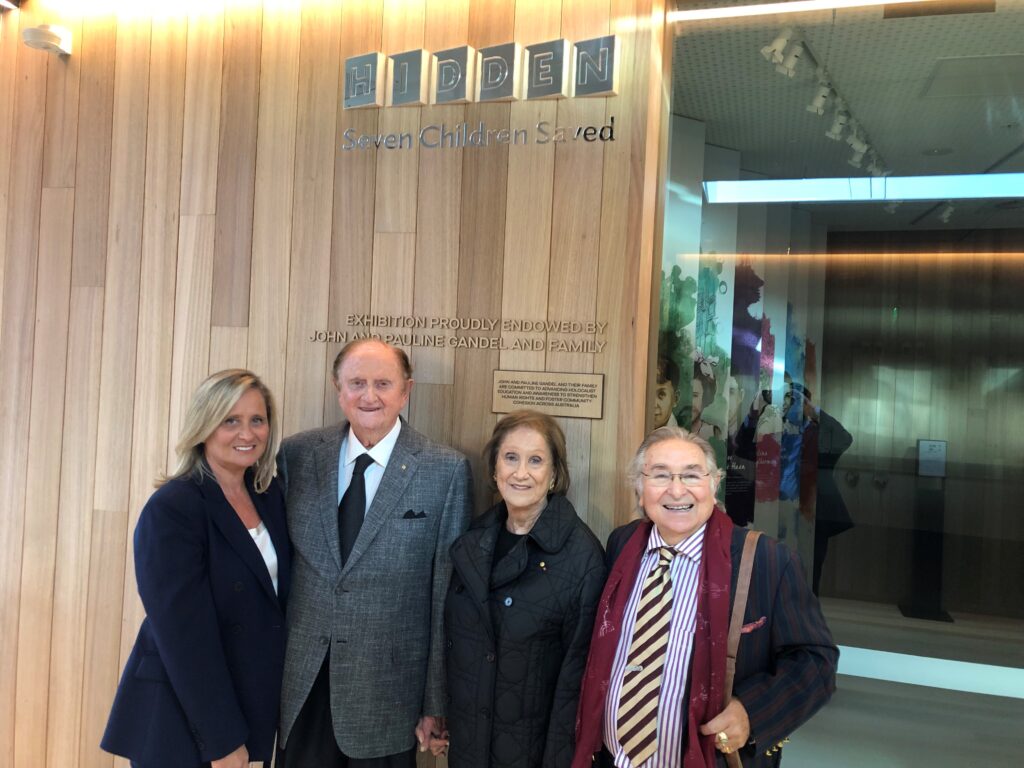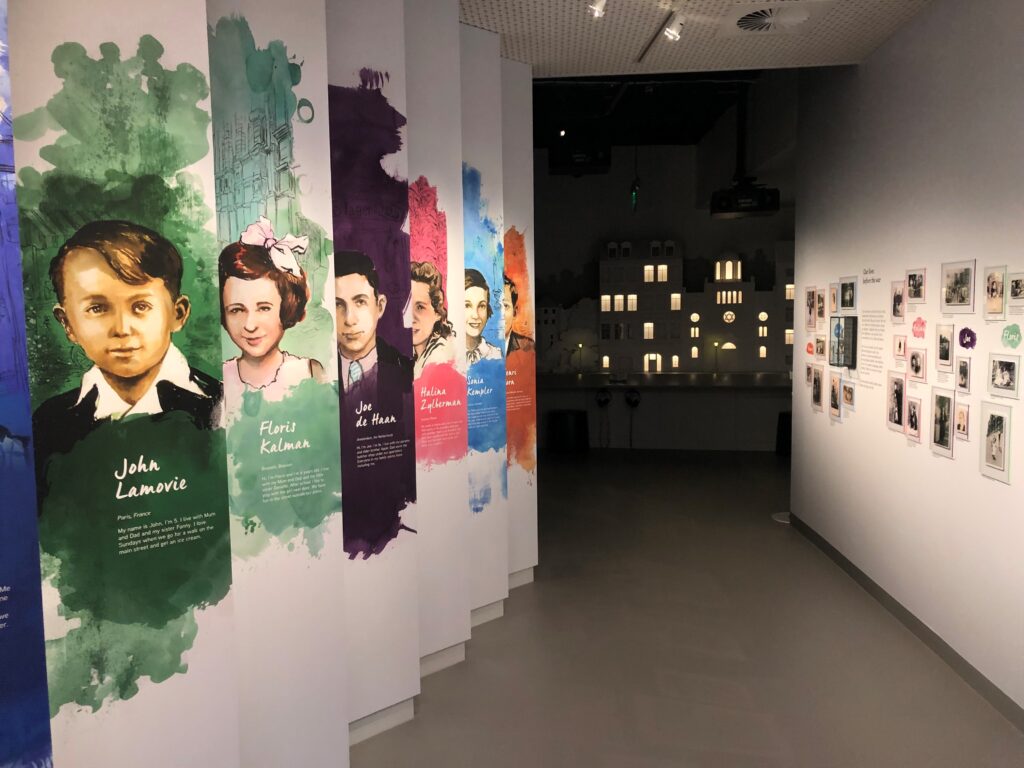A unique youth-focused Holocaust exhibition at the new Melbourne Holocaust Museum

After nearly three years of construction the Melbourne Holocaust Museum (MHM) opened its doors in November 2023.
One of the significant additional offerings of the Museum is the new children-focused exhibition, HIDDEN, which explores the story of the Holocaust through the eyes of seven child survivors, who all made Australia their home later in life.
John and Pauline Gandel and other Gandel Foundation Directors visited the exhibition ahead of the opening and were moved and inspired by the experience. HIDDEN is certain to become a major drawcard for young students learning about the Holocaust and its stories of tragedy, sacrifice, resilience and humanity.
Funded primarily by Gandel Foundation, HIDDEN is an interactive, immersive exhibition designed for ages 10+ which follows the life stories of children from various parts of Europe, who were in hiding throughout the Holocaust, reflecting in particular on the importance of choices, and how they can impact the world around us. The exhibition includes age-appropriate learning and experiences to ensure the lessons of the Holocaust are transmitted to the next generation.

HIDDEN exhibition offers visitors the opportunity to explore the experiences of children survivors of the Holocaust
At the heart of the exhibition is the experience of early years of the lives of seven children – Paul Grinwald; Joe de Haan; Floris Kalman; Sonia Kempler; Henri Korn; John Lamovie and Halina Zylberman.
Visitors are guided by MHM volunteers and they see and hear first-hand accounts of the survivors’ stories, learning about their perseverance and bravery, along with the acts of kindness and courage of others, who helped save their lives.
The exhibition uses multimedia and other cutting-edge exhibition technologies to convey the conditions of the time, complemented by testimonials, photos and artefacts that keep the child’s perspective at the forefront.
The moving images, soundscapes, dioramas and projections all offer a profound, deep and engaging learning experience for young people and all visitors.
